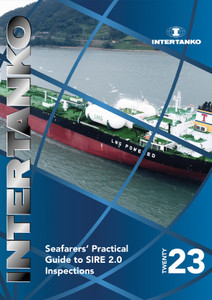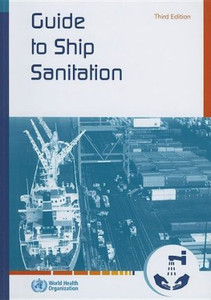
This publication describes the vetting of LNG carriers, incorporating the use of the SIRE 2.0 programme as a risk assessment tool. It provides an overview of LNG shipping business, with recommendations on the technical aspects of LNG ships relevant to the vetting and clearance process.
This third edition outlines the history of LNG shipping and provides an overview of the various types of engines, propulsion systems, gas management and cargo containment systems currently in use within the industry. It details the ship/shore compatibility process for LNG ship/shore and ship/ship cargo transfer operations.
The book sets out relevant sections of the SIRE 2.0 CVIQ and suggests practices and processes for taking advantage of new opportunities for assessment derived from the introduction of the SIRE 2.0 inspection regime. It describes changes introduced by the SIRE 2.0 programme to assist stakeholders understand the impact on their vetting processes.
Finally, the book introduces the concepts of continuous improvement, resilience and the human element and considers their impact on the vetting of LNG ships.
Purpose and Scope
Inspection and vetting by charterers, buyers, terminal operators and sellers have been an integral part of ship operations in the tanker industry for over 30 years and have helped to improve operating standards over this period.
Since the commencement of shipments in 1959, billions of m3 of LNG have been shipped across the world without an incident resulting in loss of containment.
Recent changes in trading patterns have resulted in a number of short-term freight contracts, involving vessels trading to unfamiliar ports, partial cargoes and ship to ship, double banking and tandem cargo transfer operations. Consequently, charterers, buyers, terminal operators and sellers need to assure themselves that the condition, operation and ownership of any vessel used are of an acceptable standard, by applying ship inspection and vetting systems to LNG shipping.
This publication makes reference to the practices of individual companies. Such examples are provided for guidance and may not reflect unanimous application by all industry members.
The Need to Vet Ships
Incidents such as pollution, fire, grounding and collision can have potentially serious consequences for owners, managers, charterers, cargo owners and other involved parties. The responsibility for the safety management and quality of a ship rests ultimately with its owner through its technical operator. However, charterers, buyers, terminal operators and sellers are exposed to certain risks when they use a third-party vessel. The implications of death or injury to personnel, clean-up, asset loss, compensation and brand reputation have led charterers, cargo owners, loading and receiving facilities and other stakeholders to take measures to assure themselves that vessels used are of an appropriate standard.
Vetting of the quality of marine transportation equipment is a structured evaluation process that has evolved over time. The systems and processes vary with company size, scope and diversity of marine activities (oil, chemical, LPG, LNG, etc), attitude to marine risk and marine expertise employed. Each company will have its own acceptance criteria and ship selection process and use is solely at each company’s discretion.
The introduction of the SIRE 2.0 inspection regime gives the opportunity to significantly expand the depth and quality of marine assurance data gathered during vessel inspections. This will allow for more in-depth reporting outcomes and comprehensive assessments of the quality of a vessel and its crew on an ongoing basis.
To successfully transition to SIRE 2.0, companies' IT and marine assurance departments of companies should review these changes and understand the impact on their vetting processes.
This publication describes and suggests risk assessment practices to take advantage of the new opportunities derived from the introduction of the SIRE 2.0 inspection regime.
The Author
Acknowledgements
Purpose and Scope
The Need to Vet Ships
Introduction
Section 1: The Trading of LNG by Sea
1.1 Overview
1.2 Sales and Purchase Agreements
1.3 The LNG Supply Chain
1.4 Production Projects
1.5 Major Exporters of LNG
1.6 Major Importers of LNG
1.7 The LNG Shipping Business
1.8 LNG Terminals
1.9 Ship to Ship Transfer
Section 2: The LNG Fleet in 2022. A Technical Overview
2.1 LNGCs
2.2 Floating Storage Regasification Units (FSRU)
2.3 Surveys and Certification. Certificate of Fitness
2.4 Cargo Containment Systems
2.5 Main Propulsion Systems on LNGCs
Section 3: Vetting on LNGCs
3.1 The Elements of Vetting
3.2 The SIRE 2.0 Programme
3.3 The Technical Approval Process. The Ship/Shore Interface
3.4 Assessing Ship Quality
3.5 Assessment for Use
3.6 Using Marine Assurance Systems for Assessing Ship Quality (Courtesy of MIS Marine)
Section 4: Assessing Risk
4.1 Understanding and Managing Risk
4.2 The Role of the Vetter in Assessing Risk
4.3 Addressing Observations During SIRE 2.0 Inspections
Section 5: Using SIRE 2.0 CVIQ as a Risk Assessment Tool
5.1 Analysing SIRE 2.0 Inspection Reports. Negative Observations
5.2 Chapter 8 of the SIRE 2.0 Question Library and its Application to LNGCs
Section 6: Continuous Improvement, Resilience and the Human Element
6.1 An Introduction to the Concept of Resilience as Part of the Vetting Process
Appendices
Appendix A – List of the full LNGC fleet (listed by size) >65 km3 as of the beginning of 2022, including FSRUs
Appendix B – List of the LNGC fleet ordered by ship age, oldest to newest
Appendix C – List of the LNGC fleet ordered alphabetically, by ship name
Appendix D – Orderbook of LNGCs >65 km3 for 2022–2023, including FSRUs
Captain Juan P. Presedo is a Master Mariner, holding an MBA in Oil and Gas and a BSc in Marine Transportation. He served for over 10 years at sea, predominantly on LNG carriers.
Captain Presedo has experience as a Marine Operations Superintendent and as a Marine Assurance Specialist. He is a specialist in LNG marine operations and has taken part in newbuilding projects and dry-dockings of LNG carriers. He planned and supervised LNG ship to ship transfers underway, at
anchor and alongside, and took part in the commissioning of LNG terminals. He has also trained crews and shore staff for LNG operations.
Since 2014, Captain Presedo has been an accredited OCIMF SIRE inspector and is an LR certified ISO 9001/14001 lead auditor. He is a fellow of the Institute of Chartered Shipbrokers, an associated fellow of the Nautical Institute and has frequently written for shipping magazines and specialist nautical publications. He is co-author of the 2017 Witherby title, Navigation in Shallow Waters. He was selected by OCIMF in 2021 as a Trial Inspector for the SIRE 2.0 inspection programme.
He was also the Vice Chair of the OCIMF Navigation and Routeing Subcommittee and took part in TMSA 3 and ECDIS working groups.
- Number of Pages:
- 341
- Published Date:
- May 2023
- Book Height:
- 310 mm
- Book Width:
- 220 mm
- Author:
Captain Juan P. Presedo
- Weight:
- 2 kg
- ISBN:
- 9781914993282
- Preview:
- Yes
- Publication Date:
- May 2023






